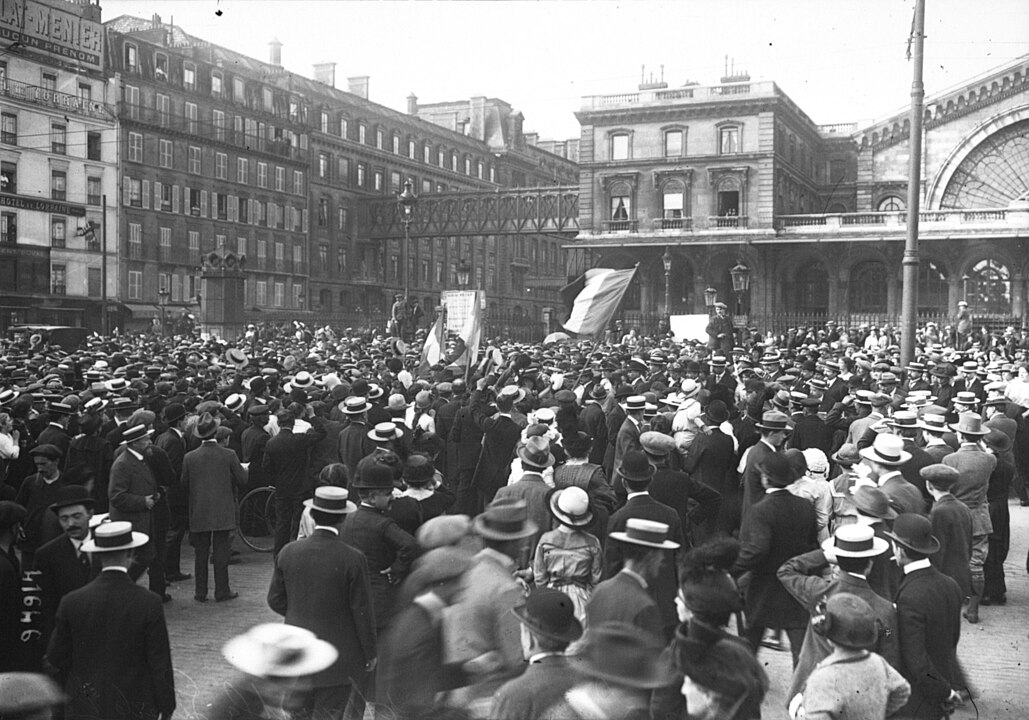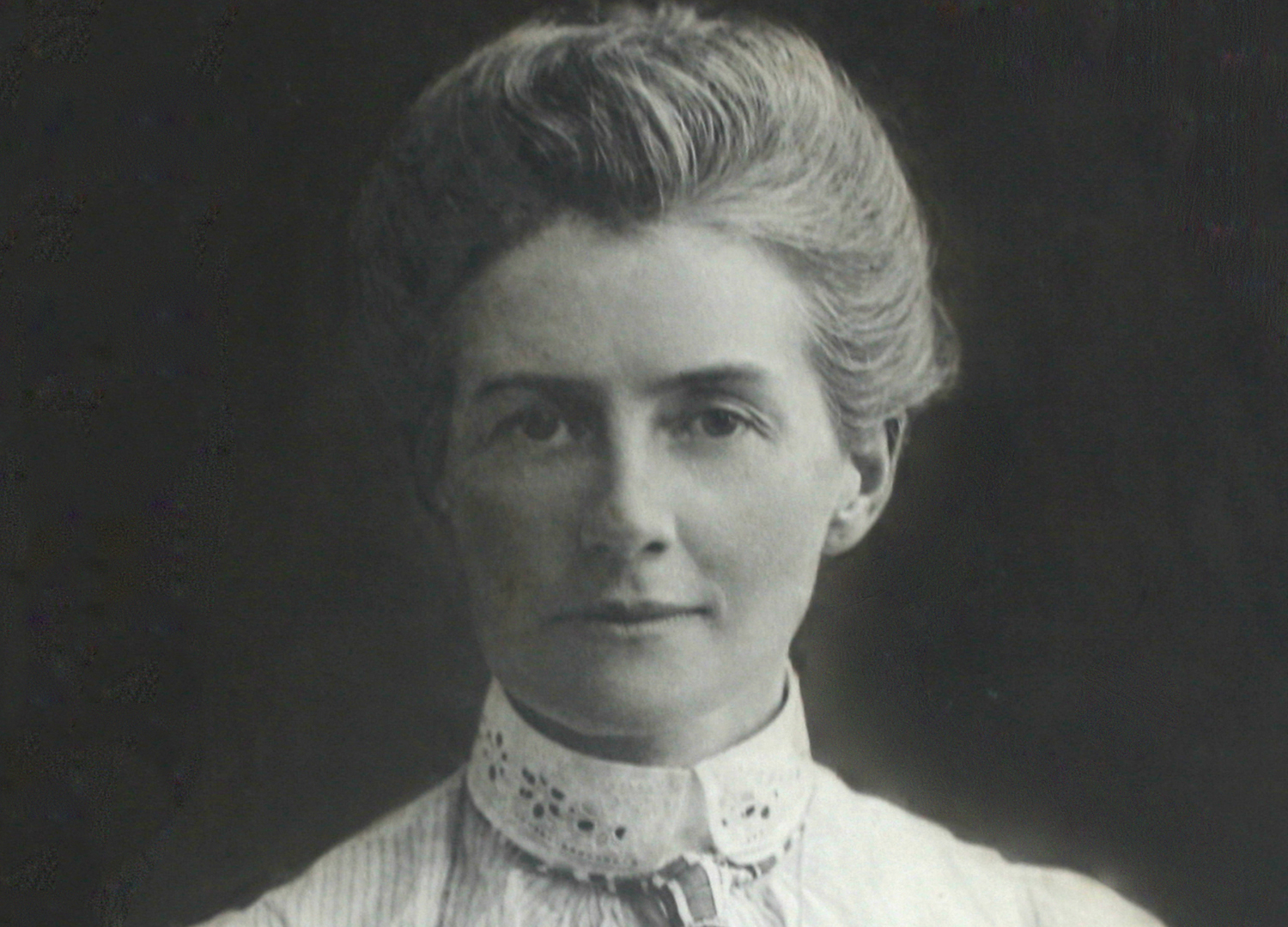The Most Important Events Of WWI
The First World War, otherwise known as "The Great War" was one of history's most pivotal and important global conflicts. It was the first major war of the 20th century and left more than 13 million people dead. It's conclusion is the reason why we have Remembrance Day on November 11th. Let's look back at some of the most important events of WWI—battles that changed the course of the war and other pivotal moments from history's bloodiest conflict.

The Assassination Of Archduke Franz Ferdinand
The assassination of Franz Ferdinand, the Archduke of Austro-Hungary, is widely considered to be the spark that lit the early-20th century European powder keg. The assassin, Gavrilo Princip, was a member of the Black Hand, a Serbian unification movement that saw Ferdinand as the barrier to their goals. The assassination occurred on June 28, 1914.
 Walter Tausch, CC BY-SA 3.0, Wikimedia Commons
Walter Tausch, CC BY-SA 3.0, Wikimedia Commons
The July Ultimatum
The July Ultimatum was a letter issued by Austria-Hungary and Germany (who's military alliance dated back to the late 19th century) on July 23, 1914. It requested—among other things—that the Serbian government was to maintain good relations with its neighbor, Austria-Hungary, and to arrest people on Serbian soil that were tied to the assassination, dissolve its nationalist organizations, and suppress publications of propaganda depicting the violent destruction of Austria-Hungary.
 Bain News Service, Wikimedia Commons
Bain News Service, Wikimedia Commons
Russia Issues Support For Serbia, Serbia Mobilizes The Army
While the Serbian Government agreed and enacted multiple parts of the ultimatum, it also requested assurances of military support from the Russian Government during this time—assurances it received. Serbia mobilized its armed forces, readying for war.
 Price, Crawfurd, Wikimedia Commons
Price, Crawfurd, Wikimedia Commons
Austro-Hungary Declares War On Serbia
On July 28, 1914, Austria-Hungary declared war on Serbia after Serbian reservists crossed into Austro-Hungarian territory and were engaged by Austro-Hungarian forces. This was the first skirmish of WWI.
An Austro-Hungarian/German Alliance Mobilizes
Germany and Austro-Hungary had entered into a military alliance known as the Austro-German Alliance in 1879. It was a pact in which the two countries pledged military support for one another in the event of an attack by Russia. Because of the Russian mobilization of forces, this alliance was activated on July 30, 1914.
 Shuppiluliuma, Wikimedia Commons
Shuppiluliuma, Wikimedia Commons
Two Alliances Go To Battle
By the end of July, two great alliances had mobilized their forces: The Triple Alliance of Germany, Austro-Hungary, and Italy and the Triple Entente of England, France, and Russia. These mobilizations were driven by treaties of mutual military support drawn up during the latter half of the 19th century.
 Unknown author, Wikimedia Commons
Unknown author, Wikimedia Commons
The Battle Of Tannenberg
The first major battle of WWI occurred at Tannenberg, Prussia (part of Germany at this time) between August 23 and August 30, 1914. German soldiers clashed with Russian forces—handing Russia a crippling military defeat in which it lost almost half of the Russian Second Army, about 92,000 men.
 Nicola Perscheid, Wikimedia Commons
Nicola Perscheid, Wikimedia Commons
German Air Raids On Paris
As the French had been drawn into the conflict by belonging to the Entente, Germany felt entitled to attack the French capital of Paris, having already invaded Belgium and being within 30 miles of Paris. It conducted air raids over Paris on the same day it defeated the Russians at Tannenberg.
British Expeditionary Forces Push Back Against German Offensive
The German offensive into France required a dual-effort by French and British soldiers of the British Expeditionary Force (BEF) to retake the territory lost to the Germans. The Battle of Marne ensued, taking place along the Marne River, a key water route into Paris. This was one of the first major losses of the German campaign to take Paris, known as the Schlieffen Plan. Had the German Army succeeded at Marne, it may well have reached Paris.
 Jules Gervais-Courtellemont, Wikimedia Commons
Jules Gervais-Courtellemont, Wikimedia Commons
The Asia-Pacific Theater Of War Explodes
In late August of 1914, the Asia-Pacific theater of WWI ignited. Germany had an overseas territory in the Chinese city of Qingdao, which it had held since 1898, after the territory was leased to Germany by China. Japanese and British forces sought to destroy a light-defended German naval base in Qingdao. The British and Japanese navies inflicted defeat on the Germans, who surrendered on November 6, 1914.
 Paul Thompson, Wikimedia Commons
Paul Thompson, Wikimedia Commons
The First Battle Of Ypres
The First Battle of Ypres, Belgium was the Germans' second attempt to take the European battlefield and forge a way through France. Beginning on October 19, 1914 and lasting until November 22nd, Ypres is widely considered one of the most important allied victories of WWI. In the end, there were 80,000 German casualties and over 120,000 British, French, and Belgian casualties,
 Unknown Author, Wikimedia Commons
Unknown Author, Wikimedia Commons
The Christmas Truce Is Observed
After months of fighting between the Triple Alliance and the Triple Entente, Christmas Day dawned and a Christmas truce was observed on the Western Front of the European Theater. All soldiers put down their guns and artillery fell quiet as Christmas carols were sung across No Man's Land in Flanders, Belgium. The fighting resumed on Boxing Day.
 Unknown Author, Wikimedia Commons
Unknown Author, Wikimedia Commons
The First Use Of Chlorine Gas On European Soil
The Second Battle of Ypres took place between April 22 and May 25, 1915. Beginning on April 22nd, the German Army used chlorine gas for the very first time on European soil. It affected over 10,000 Allied soldiers—more than half of them perished. This marked a new era in combat and was the first use of poisonous gas in a theater of war.
 Europeana 1914-1918, CC BY-SA 3.0, Wikimedia Commons
Europeana 1914-1918, CC BY-SA 3.0, Wikimedia Commons
The Gallipoli Campaign Begins
Gallipoli, Turkey was a key port in the Allied campaign to control the waterways between the Mediterranean and Black Sea. The Ottoman Empire had sided with the Germans at the start of the conflict and fought alongside them in Europe. The Allied forces, composed mostly of Australian and New Zealand troops (under the command of the British Empire) landed in Gallipoli on April 25, 1915. Gallipoli would prove to be one of the bloodiest campaigns of WWI.
 Unknown Author, Wikimedia Commons
Unknown Author, Wikimedia Commons
The Sinking Of The Lusitania
The RMS Lusitania was a passenger ship carrying 1,960 souls from New York to the United Kingdom. Three months after the German government had announced unrestricted submarine combat against ships in the English Channel (this meant that civilian vessels were also at-risk), a German U-boat fired a single torpedo at the Lusitania, off the coast of Ireland. The vessel sank, resulting in the deaths of 1,198 civilians. The sinking of the Lusitania is considered one of the most egregious acts of WWI.
 George Grantham Bain Collection, Wikimedia Commons
George Grantham Bain Collection, Wikimedia Commons
Serbia Fully Invaded By Austria, Germany, And Bulgaria
Despite holding out in the early part of the conflict, Serbian forces were overwhelmed in October of 1915, when Austrian, German, and Bulgarian forces broke through their lines and crossed the Danube River, capturing the Serbian capital of Belgrade. Defeated Serbian soldiers and their families retreated to Albania.
 Unknown Author, Wikimedia Commons
Unknown Author, Wikimedia Commons
The Longest Battle Of WWI Begins
The Battle of Verdun began on February 21, 1916—German forces launched an assault in the Meuse region of France, near the city of Verdun. Beginning with a heavy artillery barrage, Verdun's defense opened up a new front in the conflict and became a rallying cry for a battered and tired French army: "They shall not pass!" rang around the battlefield.
 Collier and Son, Wikimedia Commons
Collier and Son, Wikimedia Commons
The Introduction Of The X-Ray Saves Lives
Marie Curie's contribution to science is legendary, but did you know that she invented a portable x-ray machine and trained 150 women to operate it? It was known as "Little Curie" and was placed into ambulances used on the front lines to help save lives.
 Unknown author, Wikimedia Commons
Unknown author, Wikimedia Commons
American Pilots Volunteer To Fly French Aircraft
Despite not formally entering WWI until a year later, American pilots volunteered to fly French aircraft in 1916, forming a squadron known as L'Escadrille Américaine, comprising 38 pilots. They were later credited with 57 victories.
 Bain News Service, Wikimedia Commons
Bain News Service, Wikimedia Commons
Britain Fights On Two Fronts
While the British were fighting in Europe, they also had a second battle to contend with at home. On April 23rd, Irish nationalists took over positions in the city of Dublin and began a week-long conflict with British soldiers that became known as the Easter Rising.
 National Library of Ireland on The Commons, Wikimedia Commons
National Library of Ireland on The Commons, Wikimedia Commons
Sussex Sinks American-German Relations
The SS Sussex was a passenger vessel that was targeted and hit by a German U-boat in the English Channel on March 24, 1916. Although the Sussex didn't sink, 50 of the 325 passengers and crew perished and several Americans were injured. This outraged the public in the United States and the US threatened Germany with a cessation of diplomatic relations.
 Unknown Author, Wikimedia Commons
Unknown Author, Wikimedia Commons
Victory Divided At Jutland
After months of British naval blockading of ports in occupied Denmark, the German and British navies clashed at the battle of Jutland, Denmark. The British lost 111,980 tons of cargo and incurred 6,945 casualties, while Germany lost 62,333 tons of cargo and incurred 2,921 casualties. Each side claimed to have won the battle.
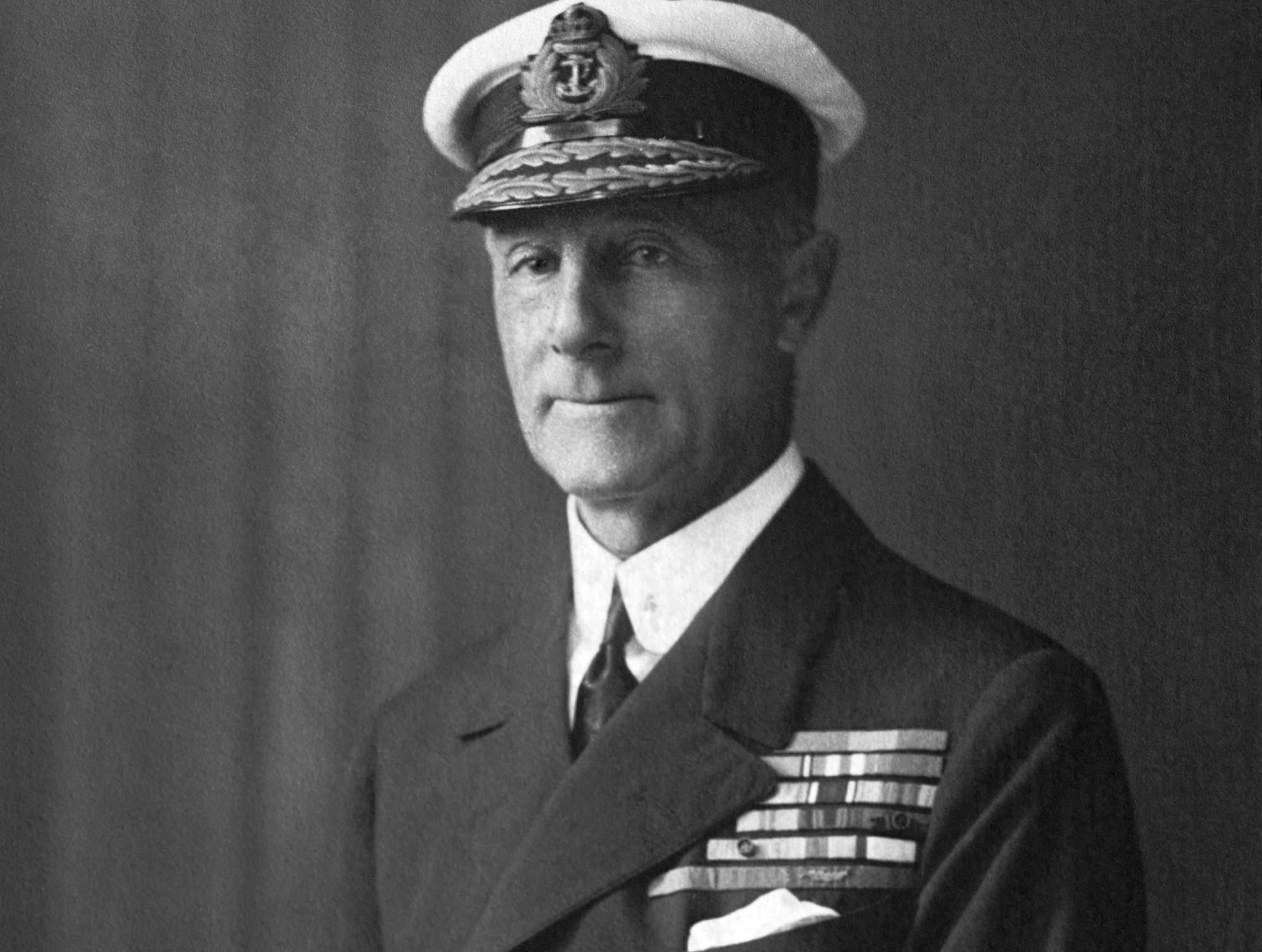 Bain News Service, Wikimedia Commons
Bain News Service, Wikimedia Commons
The Bloodiest Battle Of WWI Begins
Although the campaign didn't last as long as Verdun, the Battle of the Somme began on June 24, 1916. It would last until November of that year as both sides battled for control of the French region. The casualty counts on both sides are astronomical: 419,000 British troops, 149,000 French troops, and 650,000 German troops lost their lives at the Somme. Over 19,000 British troops perished on day one—the single greatest loss of British life in combat in a single day.
 Ernest Brooks, Wikimedia Commons
Ernest Brooks, Wikimedia Commons
The Armenian Genocide Begins
In the Spring of 1916, Armenians living in Turkey were systematically annihilated during a series of pogroms in various cities across the Ottoman Empire. Between 600,000 and 1,000,000 Armenians were killed. The Turkish government denied the allegations of its involvement in the genocide.
 Unknown Author, Wikimedia Commons
Unknown Author, Wikimedia Commons
The Sinking Of The SS Aztec
A German U-boat sunk the SS Aztec on April 1, 1917. The American-flagged steamer was torpedoed without warning as it entered British waters, coming from New York. 28 Americans drowned and the ship sank, representing the third attack by the German Navy since the start of the conflict.
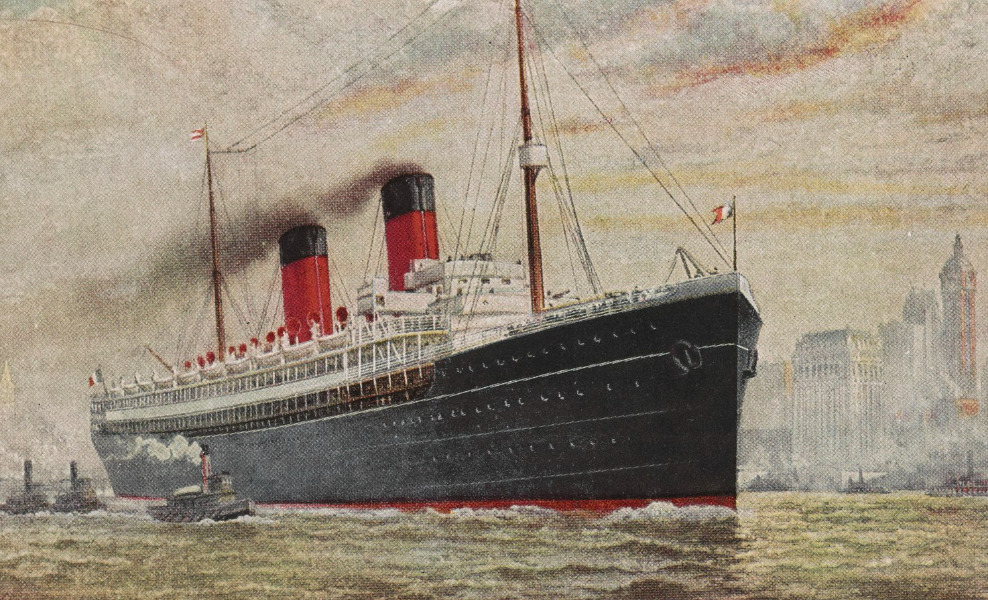 Library of Congress, Wikimedia Commons
Library of Congress, Wikimedia Commons
The Americans Enter The Fray
On April 2, 1917, President Woodrow Wilson delivered a speech to the Senate calling on them to declare war on Germany following the sinking of the Aztec and the deaths of American civilians. Four days later, the Senate overwhelmingly voted for a Declaration of War with Germany, which was signed by Wilson. America officially entered WWI on April 6, 1917.
 Harris & Ewing., Wikimedia Commons
Harris & Ewing., Wikimedia Commons
Mon Dieu! Mutinies Hit The French Army
After several heavy defeats on the Western Front and going for months without relief, thousands of French troops mutinied against their superior officers—they vowed to defend the line against the Germans, but would not attack. In one of the most stunning instances of defiance in 20th century warfare, this mutiny continued for almost a month.
Over 9,500,000 American Men Register For The Draft
When the draft was introduced in the United States on June 5, 1917, a huge number of American men signed up for service, with ages ranging from 21 to 31. In total, an astonishing 9,586,508 men signed on the dotted line.
 The Library of Congress, Wikimedia Commons
The Library of Congress, Wikimedia Commons
The First American Troops Reach French Soil
After months of training and preparation, the very first American troops stepped ashore on French soil on June 25, 1917—most were engineers and infantrymen.
 Sgt. A. Marcioni, Wikimedia Commons
Sgt. A. Marcioni, Wikimedia Commons
The Third Battle Of Ypres Begins
A third front was opened near Ypres, Belgium, this time by British forces who launched a counteroffensive against the Germans. Near the Flemish town of Passchendaele, British artillery rained down on the German forces—in total, the British fired 4,283,550 shells at the German lines during the first two weeks of the offensive. Launched on July 31, 1917, the Third Battle of Ypres concluded with a German defeat on November 10th.
 Frank Hurley, Wikimedia Commons
Frank Hurley, Wikimedia Commons
The First American Troopers Are Killed
Entering the Western Front under French command, three American soldiers of the First Division of the American Expeditionary Force were killed on October 21, 1917. Their names were James Gresham, Merle D Hay and Thomas F Enright.
 Unknown Author, Wikimedia Commons
Unknown Author, Wikimedia Commons
Woodrow Wilson's Plan For Peace
Growing battle-weary and aware of how long the conflict has dragged on, American President Woodrow Wilson outlined his plan for peace: independence for Poland and Belgium, the return of Alsace-Lorraine to France, an end to secret diplomacy, and the formation of a League of Nations.
The Assault On Belleau Wood
One of the most significant American military engagements of WWI occurred at Belleau Wood. On June 6, 1918, US Marines engaged with German stormtroopers—specialist infantrymen well-trained in infiltration tactics. The Battle of Belleau Wood continued for much of the month of June.
 Adolph B. Miller, Wikimedia Commons
Adolph B. Miller, Wikimedia Commons
The United States Begins Chemical Warfare Research
Although the Germans may have begun the chemical warfare that so horrified everyone during WWI, the American Government took that to another level as the United States War Department began research into chemical warfare, creating the Chemical Warfare Service.
 Unknown Author, Wikimedia Commons
Unknown Author, Wikimedia Commons
The Americans And French Break Through The Hindenburg Line
After months of stalemate in Europe, the Americans and French, under the command of Marshal Ferdinand Foch, pushed the German line back 20 miles, taking 12 towns and 5,000 POWs. In the ensuing weeks afterward (early to mid October 1918), they broke the Hindenburg Line—a key line of German defense in northeastern France.
 Ernest Brooks, Wikimedia Commons
Ernest Brooks, Wikimedia Commons
First Armistice Rejected
The German Chancellor, Prince Maximillian, sent President Wilson a note through the Swiss government requesting an armistice with terms. The President rejected the armistice as negotiations ground to a halt, purportedly over the American demand for the abdication of Kaiser Wilhelm.
 Unknown Author, CC BY-SA 3.0, Wikimedia Commons
Unknown Author, CC BY-SA 3.0, Wikimedia Commons
The Sailors Revolt Puts Germany On The Edge
On the evening of October 29, 1918, sailors from various ships in the German High Seas Fleet staged a mutiny. They refused an order to sail out to meet the British Fleet for a final battle at sea. The mutiny only lasted a day, but it impeded the German's planned battle against the British, as they felt they could no longer rely on their sailors to carry out their duties.
 Bundesarchiv, Bild, CC BY-SA 3.0 DE, Wikimedia Commons
Bundesarchiv, Bild, CC BY-SA 3.0 DE, Wikimedia Commons
The Abdication Of Wilhelm II
Kaiser Wilhelm II was already on the ropes after several successful American battles resulting in heavy German losses. Now, the Sailors Revolt of October 29th spread across the country—massive protests and riots led to the proclamation of a German Republic on November 9th and the abdication of Wilhelm II on the same day.
 Unknown Author, Wikimedia Commons
Unknown Author, Wikimedia Commons
The Signing Of The Armistice
One of the most important pieces of paper since the Declaration Of Independence was signed on November 11th at 5:45am by Ferdinand Foch and a British representative—although it did not come into effect until 11am that day. At 11am across the battlefields of Europe, the guns and artillery fell silent as WWI ended. Although negotiations to enforce a treaty would take another two years, as the Treaty of Versailles was ratified at 4:15pm on January 10, 1920.
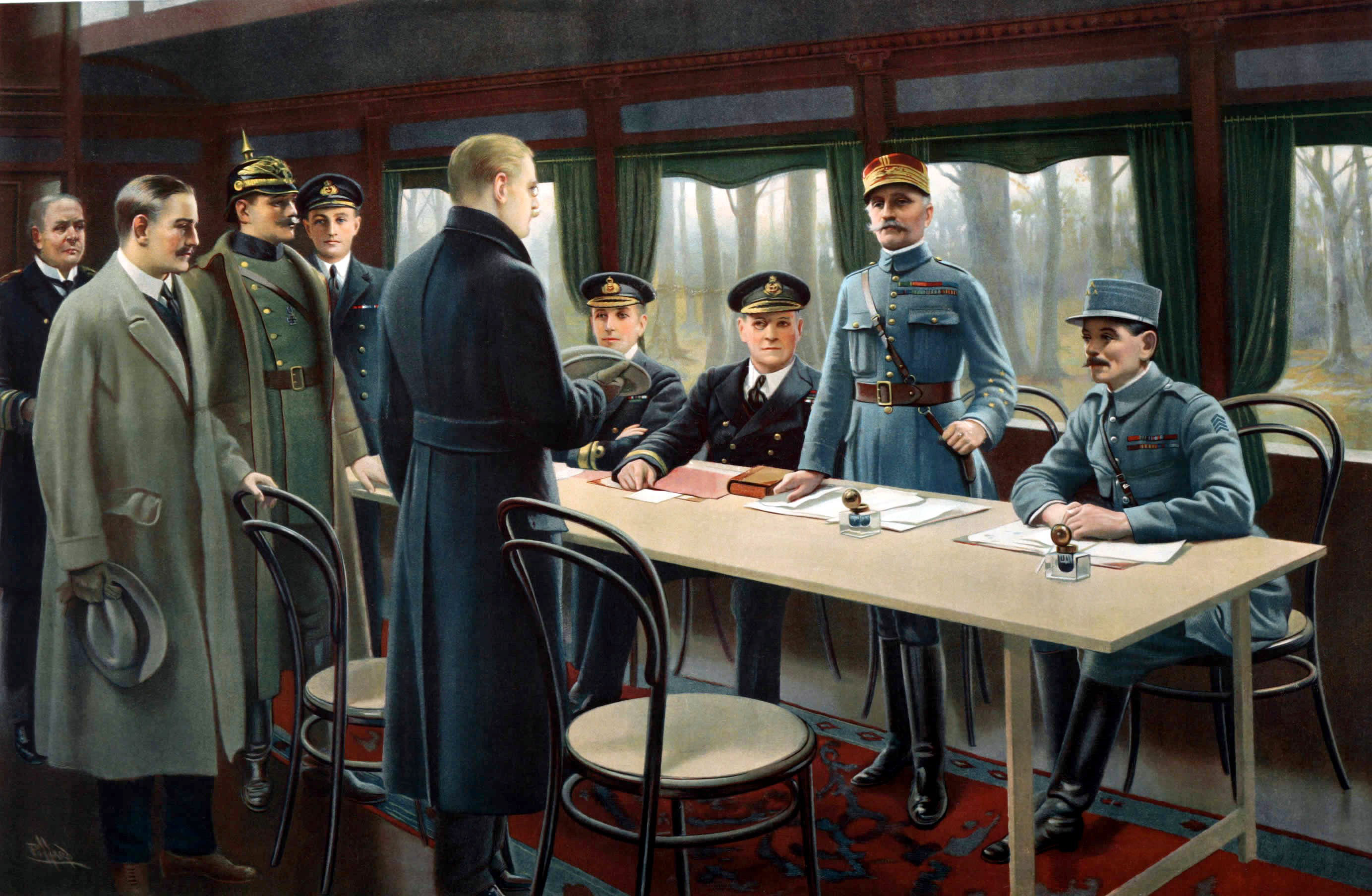 Maurice Pillard Verneuil, Wikimedia Commons
Maurice Pillard Verneuil, Wikimedia Commons
The Sacrifice Of Edith Cavell
Despite being a nurse—and treating all soldiers, regardless of their uniform—a British nurse, Edith Cavell was captured, court-martialed for "being a spy", and shot dead by German soldiers at 7am on October 12, 1915 in Brussels. One of her most famous quotes is, "I can't stop while there are lives to be saved".



